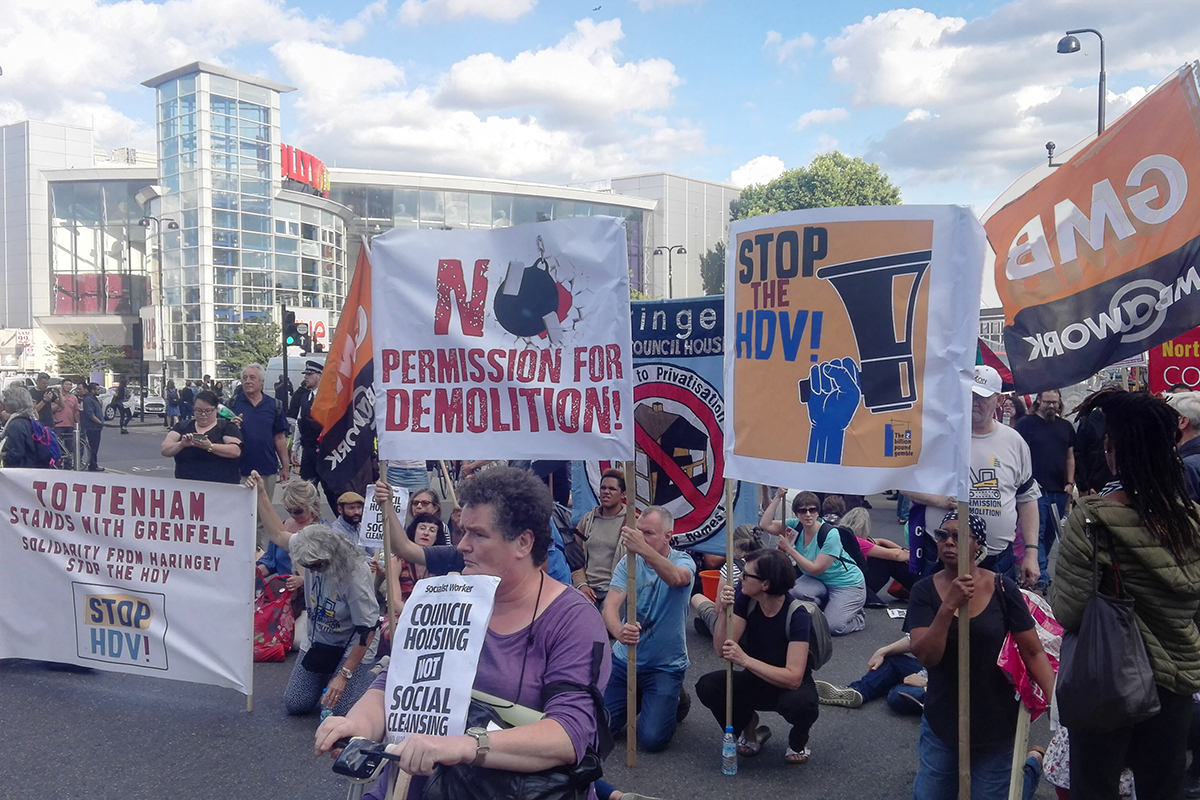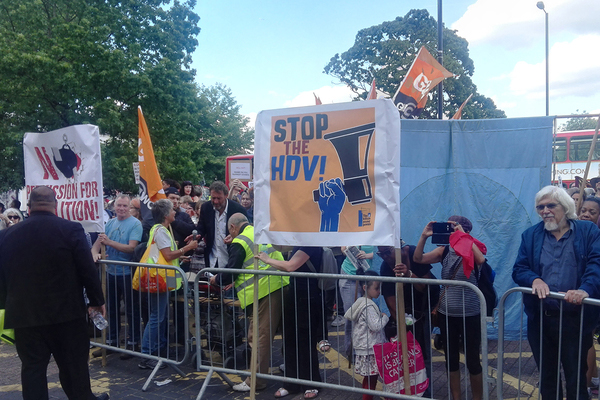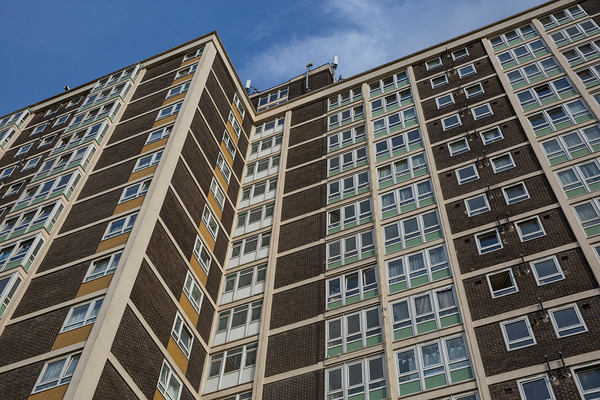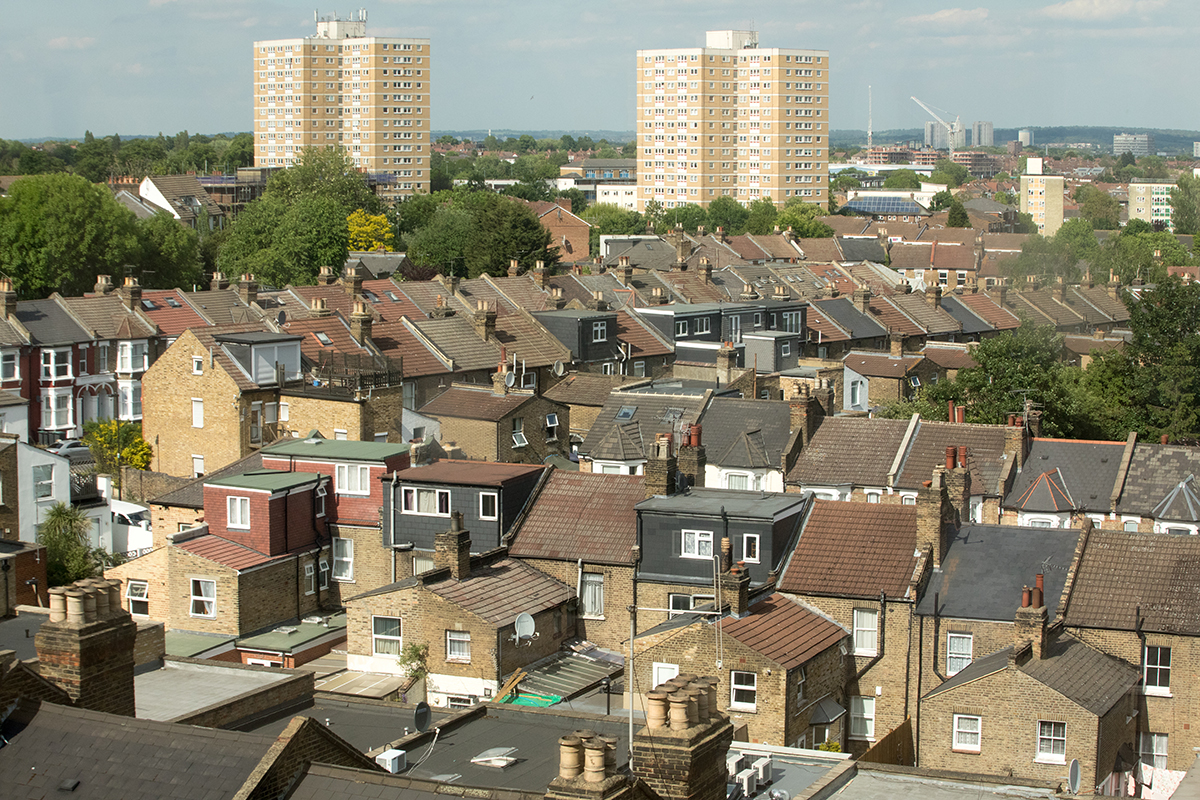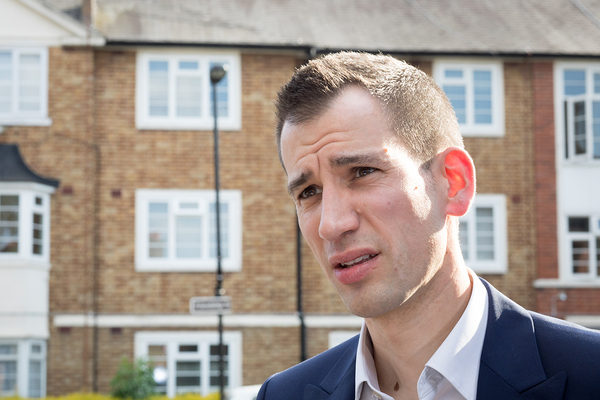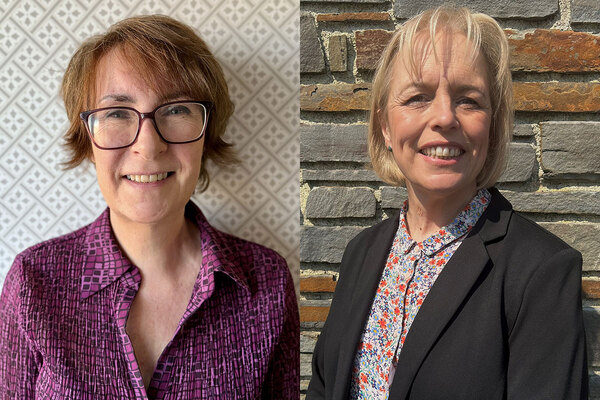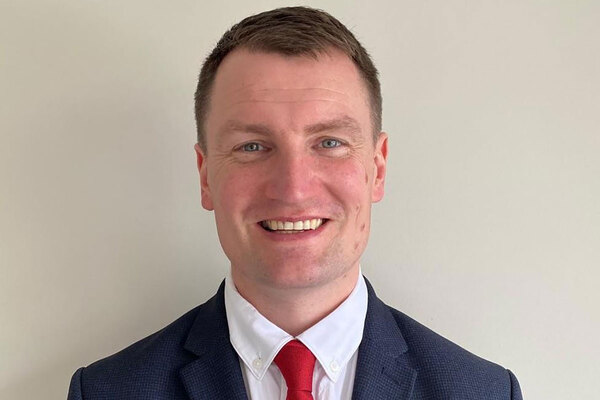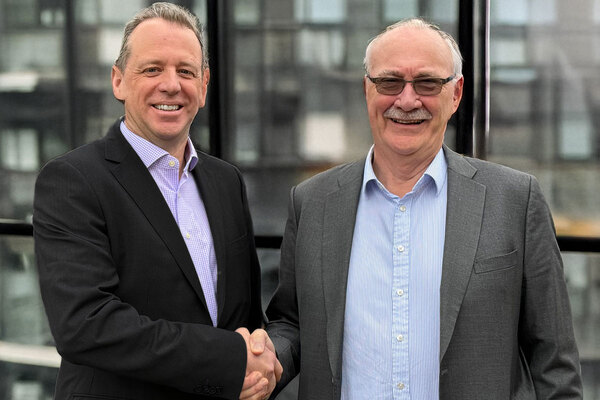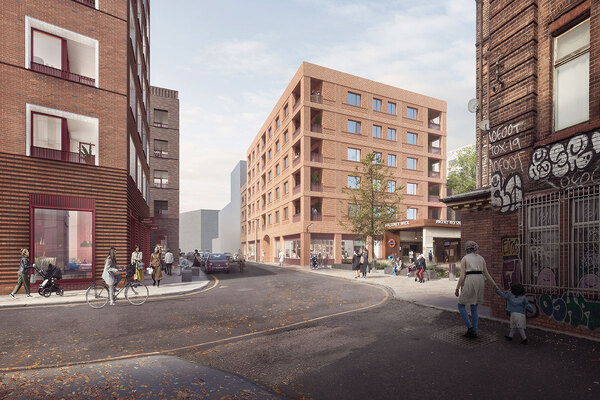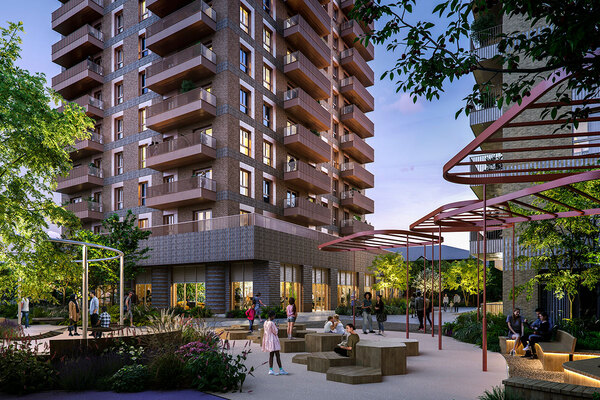How has Haringey moved on from its development vehicle fight?
The political landscape of Haringey is changing. Gavriel Hollander speaks to Dan Hawthorn, the man tasked with implementing the council’s new vision for housing. Photography by Jonathan Goldberg
On the fifth floor of a council office building that is long overdue a lick of paint, Haringey Council’s newly installed director of housing, regeneration and planning is in a philosophical mood.
“In my line of work, it doesn’t make sense to ask what would happen if the politics wasn’t there,” Dan Hawthorn tells Inside Housing. “The politics is just a fact of the environment.”
We are talking politics because here, over the past 18 months, politics and housing have become part of the same story. And it is a story that has made headlines far beyond this corner of north London.
In last year’s local elections, a new leadership team, led by Labour members drawn mostly from the left-wing grassroots organisation Momentum, took over Haringey Council after ousting the former administration led by the more centrist – or ‘Blairite’ to her opponents – Claire Kober. It was seen as an important salvo in the war over the direction of the Labour Party and of left-wing politics in the country.
The catalyst for this change was a housing issue – specifically the controversial £2bn joint venture deal the council had struck with private developer Lendlease, known as the Haringey Development Vehicle or HDV. Hated by huge swathes of council tenants, the HDV would have torn down some of the borough’s most famous estates and brought about the construction of 6,400 multi-tenure homes over 15 years.
But while new council leader Joseph Ejiofor quickly consigned the HDV to a historical footnote, one of its architects – Mr Hawthorn – is the man tasked with working out a new way forward for housing in Haringey. Inside Housing is here to learn about what this change in direction means and how the 44-year-old plans to make it a reality.
It is a warm, clear day when we meet. From our elevated vantage point above Wood Green Tube Station we can see rows of tightly packed terraced housing, much of it council owned, and pepper-potted 1960s tower blocks. Away to the east, Tottenham Hotspur’s brand-new stadium is glistening in the sunshine.
Mr Hawthorn, a season ticket holder at the club, is preparing for his trip to Madrid for the Champions League Final at the start of June. “There’s a good chance it will never happen again,” he laughs, “so I felt I had to go.” But for now, his mind is on the day job.
The contrast between Spurs’ new home and the densely populated estates in its shadow is an eloquent illustration of the kind of inequalities every London borough has to grapple with when it comes to devising housing policy. With more than 10,000 households on the council’s waiting list and a requirement under the mayor’s updated London Plan to deliver 1,958 a year, there are no easy answers.
So, why was the HDV the wrong one? According to Mr Hawthorn, it was not.
“It was a response to the national, regional and local conditions as they were then. I was proud of that work; we got to a coherent and deliverable set of policies, and that environment has changed.”
He stresses that what has changed is not just the names of the people who sit in the council chamber, but the direction of national housing policy as well.
“The rise and fall of the Housing and Planning Act, the way the London Plan and mayoral policies have changed, the lifting of the Housing Revenue Account (HRA) borrowing cap – all of those external factors meant that the previous housing strategy was a response to a world that isn’t quite a world we live in now,” he says.
“Even if there hadn’t been quite the dramatic change in the local political priorities of Haringey, I think we’d have been increasingly aware that our existing strategy was looking a bit dusty and out of date.”
Mr Hawthorn occupies a peculiar position in Haringey. Although he only took on his current job in February, the week we meet marks his fifth anniversary of joining the council, having previously worked for the mayor’s office to help deliver the London 2012 Olympics.
He has straddled two administrations whose supporters were at loggerheads over the HDV and the vexed ideological question of regeneration.
To settle that question, a new housing strategy for the borough is being drawn up. While the council has repeatedly described that strategy as a top priority for 2019, Mr Hawthorn says it is now expected to be adopted in March next year, following consultations. Despite the political upheavals that have gone on around him, he describes the new strategy in terms of evolution rather than revolution.
“The basic approach is the same but with a different emphasis,” he explains. “The structural issues in the housing market have not changed: we desperately need more homes and there’s a real challenge to maintain the quality of housing, nowhere more than the private sector.
Terraced housing and tower blocks in Wood Green, Haringey
“Those facts haven’t changed [but] there are a number of things that have changed, most obvious of which are the priorities of the council’s new administration for the types of affordable housing that they particularly prefer.”
Decoding this, what it boils down to for the council is a pivot away from developing mainly mixed-tenure schemes alongside the private sector and towards the idea of doing it for themselves. The rebirth of council-built housing is a national trend, but Haringey’s plans are striking in their ambition: it wants to have built 1,000 social rented council homes by the end of the current administration in 2022.
“Even if there hadn’t been quite the dramatic change in the politics, I think we’d have been increasingly aware that our existing strategy was looking a bit dusty and out of date”
Mr Hawthorn accepts that achieving this target from a virtual standing start would be no mean feat: “One should not underestimate the challenge that we are facing to resource ourselves properly to be a housing developer again after 40 years of not doing it. The muscles have wasted completely in the local government sector and that is a massive challenge.”
Similarly to other local authorities, Haringey has established its own housing company so it could develop new council housing. But the lifting of the HRA borrowing cap last year has meant that it can build without doing it through a specialist vehicle. The new housing company will instead be used by the council to develop and hold homes that can be let at non-social rents.
Haringey will also continue to build market sale homes to fund its social rented ones, which Mr Hawthorn insists cannot be done purely through the mayor of London’s capital subsidy programme, which works out at around £100,000 per home. Furthermore, private sector partners – whether they are major developers like Lendlease or housing associations – will be needed if the council is to meet its overall housing targets. As Mr Hawthorn puts it: “We are really clear about the role that third parties will play in delivering homes of all tenures; the council on its own is never going to be the answer to the problem.”
And this is where the ghost of the HDV still lingers.
On the Love Lane Estate, 297 homes are slated for demolition, pending a residents’ ballot, as part of a £1bn project known as High Road West. The project – which features 2,500 new homes – will undoubtedly increase the supply of housing in Haringey. But given that the council’s partner is Lendlease – the ersatz villain of the piece for opponents of the HDV – longstanding campaigners are once again up in arms.
Paul Burnham, secretary of Haringey Defend Council Housing, argues that the impact of the failure of the HDV has been little more than a change of tone from the town hall. “We have a more low-key, light-touch, sophisticated approach [by the council],” he tells Inside Housing. “But the fundamental problem is that all the housing policies are based on estate gentrification and social cleansing.
“They say they want to keep communities together but that’s not the case at Love Lane.”
The accusation of ‘social cleansing’ has dogged Haringey, along with every other inner London borough that has taken on extensive estate renewal work. Mr Hawthorn insists that the vast majority of Love Lane residents have been rehoused according to their wishes. He also stresses that his job is to make sure the council is listening to as wide a range of voices as possible “and not necessarily assume that those that shout loudest speak for everyone”.
“You can only do that by boots on the ground,” he continues. “Our experience at Love Lane was that the majority did favour something quite radical. There’s no question that the character of the place and the community is going to change, but we’re clear that’s what the residents told us that’s what they want; we wouldn’t be doing it if they hadn’t.”
Nevertheless, the battle over Love Lane and a number of other estates seems far from over. Mr Hawthorn accepts that the opposition councils face is partly down to a deficit of trust.
“There’s a scepticism about the motivations and priorities of private developers,” he elaborates. “There’s also partly a scepticism about trust in institutions, including the council, and those institutions’ ability to regulate and moderate and have appropriate relations with the private sector.
“It’s impossible to ignore in Haringey and London that those levels of trust are as low as they’ve ever been in the time I’ve been working in the sector. Is that always going to be true? I don’t know. Is it a large factor in my life for the foreseeable future? Yes.”
“There’s a scepticism about trust in institutions, including the council”
So is a large part of his job a balancing act? The length of his answer demonstrates how delicate that act is.
“I do have a job to do to find the right balance of satisfying the Haringey community, our planning committee and all the other stakeholders that we are indeed getting as much social benefit, social value of one kind or another – including affordable housing – from the investment coming into the borough, while also creating and maintaining an environment that is welcoming to that investment and which acknowledges the essential role that investment plays in improving the quality of life and fairness of life in this borough for as many people as possible.”
In some ways, it sounds like a politician’s answer. And Mr Hawthorn, Cambridge born but Oxford educated, clean cut in a tieless blue suit and crisp white shirt, fits the mould of a Blair-era politician. So would he ever consider making the switch?
“I was a student politician,” he admits. “And I’ve thought about it. But over time, I’ve come to realise my skills lie in working with them rather than as one. Whatever temptations there were have ebbed away.
“If all my meetings with the political leadership here consisted of me talking to people like me, what would be the point of them? What would be the point of me?”

